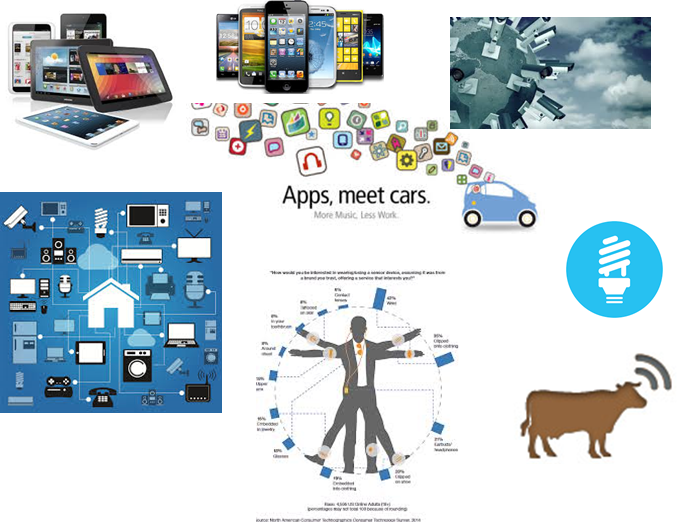
The Internet of Things means everything is connected. All machines will have sensors and network connectivity that will allow them to communicate with each other and exchange data. It’s the thing that will take the world from having just smart phones to smart everything. The CEO of Orange, Stephane Richard, has said that by 2020 there will be “25 Billion objects connected in the world” —that’s 1000x more connected devices than we have today. So Orange is launching an IoT-specific network in early 2016 based on something called LoRaWAN (long range WAN) technologybecause a good portion of these connected devices are expected to be fine with low bit rates and small quantities of data to stay connected.
However, some of the IoT connections will require super fast response times, such as your car when it’s driving itself a few years from now. 5G will be required for that, and establishing 5G is not a simple task. Arguably, the two high-level requirements most often cited are a 1,000 times improvement in peak data rates (on LTE 2010) and a major reduction in end-to-end latency to fewer than 5 milliseconds. In order to make this possible, we have to start with solidifying the cloud, virtualization, and programmable networking like NFV and SDN (you can read more about therequirements of achieving 5G in this white paper). I mean, is it even possible to design one network that could deal with the requirements of 25 billion objects!?
But let’s get to what an IoT Service Provider could do. Obviously, one is to do what Orange is doing– provide a pipe on some kind of new IoT technology. However, it is also likely that specialization could occur because there will be so many connected things. And with the increasing movement to NFV and cloud-based infrastructure, it seems there would be more opportunities for specialized MVNO’s to interact with the internet. For instance, there might be MVNO’s that not only handle specialized connectivity (kind of like the Wireless Internet Service Providers when WiFi first came around back in the day) but also handle interconnectivity between these specialized service providers. These service providers would provide a function similar to the wireless exchanges like IPX that we see today.
Earlier, I mentioned the cars that drive themselves. Because these cars will need the most minimal network latency possible because they’ll have to make split second decision (like we do when we drive), there will need to be SPs that have specialized networks for these kinds of machines with very particular, strict requirements.
Other ideas will come because IoT will generate just so much, and I mean so much data that specialized IoT MVNOs will emerge to efficiently store and analyze the data for customers. An MVNO could analyze the data and possibly spot trends before people know they are trends.
It is also likely that all these connected devices will have different pricing and billing models and MVNOs could be designed and launched to create the best pricing model for the use case at hand. An example of this is the different kinds of MVNO’s today that cater to different population segments – prepaid cards, people who don’t use cell phones a lot and just need pay-as-you-go calls, people who need larger screens, etc. For IoT there will likely be similar models that cater to specific verticals and cater to businesses.
There are many possible roles for carriers in IoT: data collection and analytics, connectivity and access, transport, cloud and hosting, and beyond. We haven’t completely figured this all out. However, I can see the possibilities that IoT SPs offer, and why many regard IoT as “the next big thing.”








